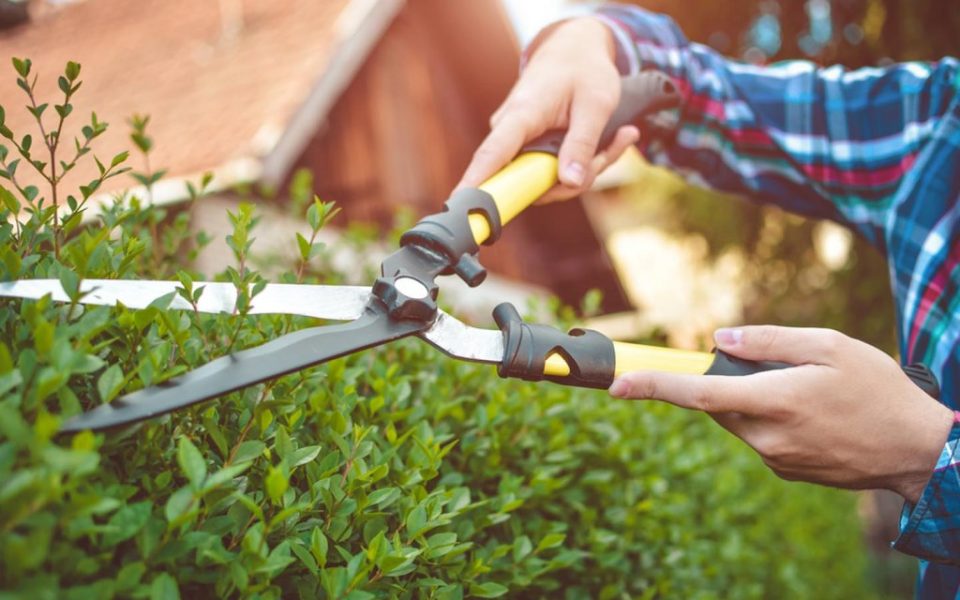A well-maintained home, both indoors and outdoors, can greatly enhance your living experience, increase property value, and provide a sanctuary where you can unwind and connect with nature. While many people focus on interior design and décor, the garden and the right tools can transform your home in ways that go far beyond aesthetics. Whether you have a small balcony, a sprawling backyard, or something in between, incorporating smart gardening solutions and investing in quality tools can elevate your home to new heights. This article explores various ways to improve your home through thoughtful landscaping, efficient gardening, and the use of the right tools, making your space more beautiful, functional, and sustainable.
1. Create an Outdoor Oasis with Functional Landscaping
The garden often acts as an extension of the living space, and turning your outdoor area into a well-designed oasis can dramatically change the ambiance of your home. Whether you’re looking to create a peaceful retreat or a space for entertaining, landscaping plays a crucial role. The first step in transforming your garden is to assess your space and determine its function. Are you looking for a low-maintenance garden, or do you want a vibrant vegetable plot? Would you prefer a tranquil garden with water features and flowering plants, or a more dynamic, multi-functional space with areas for lounging, dining, and outdoor cooking?
To make the most of your outdoor space, consider the following:
-
Pathways and Zones: Creating defined zones with pathways can help segment your garden into functional areas. Whether it’s a cozy seating area, a vegetable garden, or a space for relaxation, pathways can add structure and lead the eye across the space. Tools like a garden spade and shovel are essential for digging out pathways, and gravel or paving stones can give the space a more formal, clean look.
-
Vertical Gardens: If you have limited horizontal space, don’t overlook the potential of vertical gardening. Vertical planters, climbing plants, and trellises can bring color and life to walls or fences, adding a touch of greenery without taking up too much space. For this, sturdy trellises, climbing ropes, and specialized tools for pruning will ensure the plants grow effectively and safely.
-
Outdoor Lighting: Adding lighting to your garden doesn’t only make it more visually striking, but it also extends the usability of your outdoor spaces well into the evening. Solar-powered lights, string lights, or even outdoor chandeliers can create a magical ambiance. A well-lit garden can serve as the perfect venue for an intimate dinner party or a peaceful evening under the stars.
2. Plant a Sustainable Garden with Edibles
One of the most rewarding improvements you can make to your home is the addition of a sustainable garden that provides edible plants. Not only will this boost your home’s curb appeal, but it will also give you access to fresh, organic produce right at your doorstep. Growing your own fruits, vegetables, and herbs can be both enjoyable and practical, especially for those looking to reduce their carbon footprint and live a more self-sufficient lifestyle.
Tools such as raised garden beds, vertical planters, and smart irrigation systems can make your vegetable or herb garden easy to manage. Raised beds allow for better soil control and drainage, and they can be particularly useful for growing plants like tomatoes, lettuce, and peppers. They also reduce the strain on your back, as they eliminate the need for constant bending over.
For beginners, starting with easy-to-grow plants like herbs is a great way to dip your toes into the world of edible gardening. Herbs like basil, rosemary, and thyme require minimal effort and can be grown in containers or on windowsills. With the right tools—such as hand trowels, watering cans, and soil aerators—you can cultivate an herb garden even in small spaces like balconies or kitchen windows.
3. Incorporate Hardscaping for Durability and Elegance
Hardscaping refers to the use of non-plant elements such as stone, brick, wood, and metal to create a visually appealing and functional landscape. Incorporating hardscaping into your garden design can add texture, dimension, and durability, while also reducing maintenance requirements. Tools like a masonry hammer, concrete mixer, or landscaping rake are indispensable for these kinds of projects.
A well-placed stone patio or brick walkway can create a stylish, functional area for outdoor dining or entertaining. Additionally, if you’re looking for a more low-maintenance landscape, adding hardscaping features like gravel paths, raised garden beds, and stone walls can reduce the amount of weeding and upkeep required. This allows you to spend more time enjoying your garden rather than working in it.
Water features, such as ponds or fountains, are another excellent addition to hardscaping. These features can create a tranquil atmosphere in your garden and provide a calming sound to your outdoor retreat. Tools for digging and securing pipes or installing pumps are vital for creating and maintaining these water features.
4. Boost Curb Appeal with Attractive Front Landscaping
First impressions matter, and the first thing people see when they approach your home is your front yard or garden. The right landscaping can significantly enhance the curb appeal of your property, making it more inviting and increasing its overall value. Tools like hedge trimmers, lawn mowers, and edging tools will help keep your lawn neat and well-maintained.
Start by planting a mix of colorful flowers, shrubs, and ornamental grasses along walkways and borders. Boxwood hedges or lavender plants can create a lush, fragrant border around your front door, while perennials like peonies, daffodils, or roses will provide a steady burst of color throughout the seasons.
Incorporating trees into your front garden can also be a great way to make a statement. Consider planting shade trees like maples or oaks that provide year-round beauty and reduce the urban heat island effect. A tree pruner or pole saw will be necessary for maintaining the shape and health of larger trees.
For those looking for even more impact, adding a focal point like a water feature, sculpture, or outdoor art piece can create a lasting impression. Using garden tools to establish these features will ensure that the plantings around them remain tidy and well-defined, enhancing their beauty.
5. Transform Indoor Spaces with Functional Gardening Tools
While the garden might be the focal point of outdoor improvements, indoor gardening can also significantly enhance the atmosphere of your home. Incorporating plants into interior spaces not only purifies the air but also brings warmth and life into rooms. Indoor gardening has become a popular trend, especially for those living in apartments or cities with limited outdoor space.
To create an indoor garden, consider low-maintenance plants such as succulents, snake plants, or pothos. These plants thrive indoors and can be grown in stylish containers or hanging planters. Investing in a few essential tools, like pruning shears, watering globes, and moisture meters, will help you maintain your indoor plants effectively.
Additionally, indoor gardening can include things like creating your own herb garden on the kitchen windowsill or growing small vegetables like lettuce or radishes in a hydroponic system. Tools such as grow lights or small indoor greenhouses can help support plant growth, especially during the colder months when natural sunlight is limited.
6. Maintain and Care for Your Garden with the Right Tools
The key to a flourishing home garden, whether indoors or outdoors, lies in regular maintenance. With the right tools, maintaining your garden can be a straightforward and rewarding task.
Investing in quality tools, such as a good rake, pruners, watering systems, and garden gloves, can help reduce the time spent on maintenance. Regularly trimming plants, clearing dead leaves, and ensuring your garden gets the proper nutrients can keep it healthy and thriving. Additionally, taking care of your tools, cleaning them after each use, and sharpening blades ensures they perform effectively and last longer.
Conclusion
Transforming your home with the right tools and gardening techniques offers countless opportunities to enhance your living space, increase its value, and create an environment that is both beautiful and functional. From creating an outdoor oasis with thoughtful landscaping to growing your own food and improving indoor spaces with plants, the potential for improvement is limitless. With the right tools, you can make gardening and home improvement tasks both manageable and enjoyable, turning your home into a sanctuary that reflects your personal style and commitment to sustainability. Whether you’re an experienced gardener or a newcomer, investing in the right tools and taking the time to cultivate your outdoor space will pay off in the long run, enriching both your life and your property.

